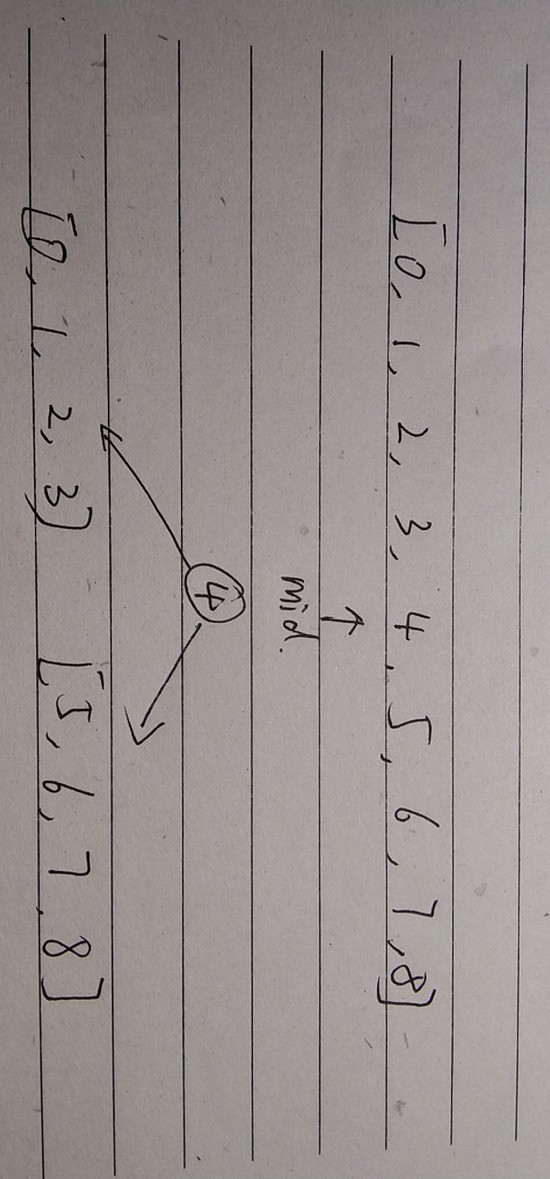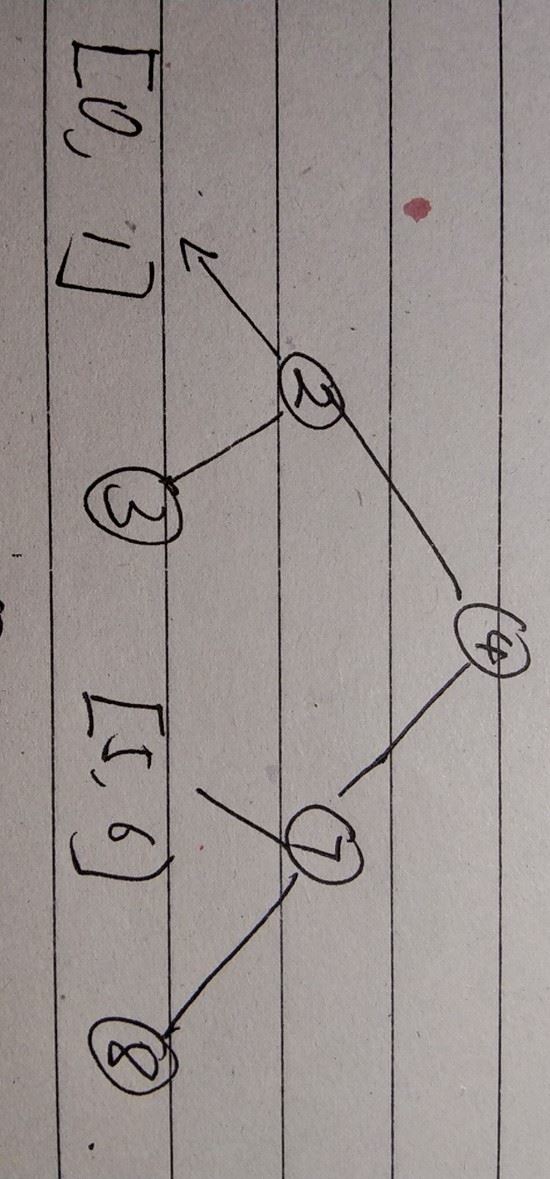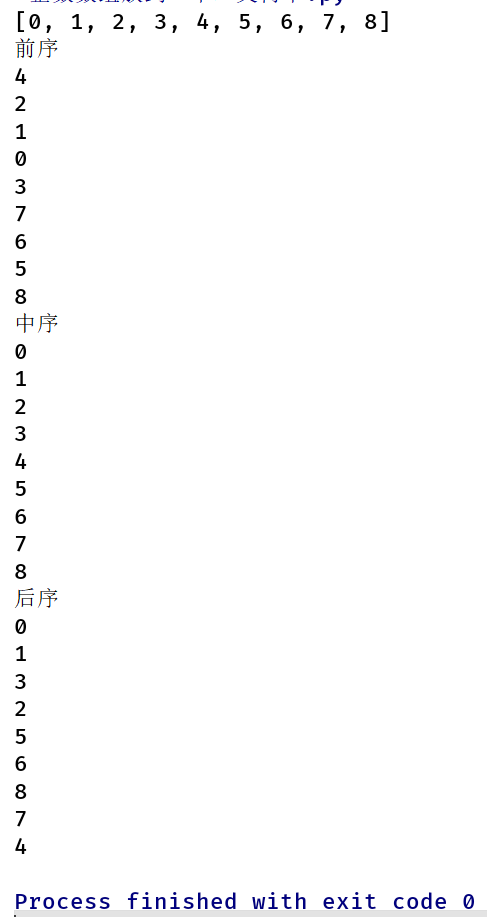这篇文章主要介绍了怎么在python中将有序数组转换为二叉树,此处通过实例代码给大家介绍的非常详细,对大家的学习或工作具有一定的参考价值,需要的朋友可以参考下:
Python主要应用于:1、Web开发;2、数据科学研究;3、网络爬虫;4、嵌入式应用开发;5、游戏开发;6、桌面应用开发。
题目:将[0,1,2,3,4,5,6,7,8,9,10]存储到二叉树,原数组有序,转换为二叉排序树。
二叉排序树的特点:当前节点的左子树上的所有节点都小于该节点,右子树上的所有节点都小于该节点。
二叉排序也称为二叉查找树。
我的实现思路:
取有序数组的中间节点作为根节点,将数组分为左右两个部分,对左右两个子数组做相同的操作,递归的实现。
图示:

1

2

3
代码实现:
def array_to_bitree(array): #判断arr是否为空 if len(array)==0: return BiTNode(array[0]) mid=len(array)//2 # 有序数组的中间元素的下标 #print(mid) #start=0 # 数组第一个元素的下标 #end=-1 # 数组最后一个元素的下标 if len(array)>0: #将中间元素作为二叉树的根 root=BiTNode(array[mid]) #如果左边的元素个数不为零,则递归调用函数,生成左子树 if len(array[:mid])>0: root.left_child = arrayToBiTree(array[:mid]) #如果右边的元素个数不为零,则递归调用函数,生成左子树 if len(array[mid+1:])>0: root.right_child = arrayToBiTree(array[mid+1:]) return root
我们调用前面写的三种遍历方法看一看,我们构造的树是否正确:
#将[0,1,2,3,4,5,6,7,8,9,10]存储到二叉树
if __name__ == '__main__':
#先构造一个有序数组、链表
arr=[]
for i in range(10):
arr.append(i)
print(arr)
#调用函数
BT=arrayToBiTree(arr)
#前序遍历二叉树
print("前序")
print_tree_pre_order(BT)
# 中序遍历二叉树
print("中序")
print_tree_mid_order(BT)
# 后序遍历二叉树
print("后序")
print_tree_after_order(BT)输出:

根据这三种遍历结果可以判断出二叉树的结构,结果和前面的是一样的,代码如下:
#定义二叉树结点类型
class BiTNode:
"""docstring for BiTNode"""
def __init__(self,arg):
self.data = arg
self.left_child = None
self.right_child = None
#前序遍历
def print_tree_pre_order(root):
#先判断二叉树是否为空
#if root.left_child is None and root.right_child is None:
if root is None:
return root
#先根
print(root.data)
#再左
if root.left_child is not None:
print_tree_pre_order(root.left_child)
#再右
if root.right_child is not None:
print_tree_pre_order(root.right_child)
#中序遍历二叉树
def print_tree_mid_order(root):
#先判断二叉树是否为空,当左右节点都为空时
if root is None:
return
#中序遍历 左根右
#遍历左子树
if root.left_child is not None:
print_tree_mid_order(root.left_child)
#遍历根节点
print(root.data)
#遍历右子树
if root.right_child is not None:
print_tree_mid_order(root.right_child)
#后序遍历
def print_tree_after_order(root):
#先判断二叉树是否为空
if root is None:
return root
#再左
if root.left_child is not None:
print_tree_after_order(root.left_child)
#再右
if root.right_child is not None:
print_tree_after_order(root.right_child)
#先根
print(root.data)
def array_to_bitree(array):
#判断arr是否为空
if len(array)==0:
return BiTNode(array[0])
mid=len(array)//2 # 有序数组的中间元素的下标
#print(mid)
#start=0 # 数组第一个元素的下标
#end=-1 # 数组最后一个元素的下标
if len(array)>0:
#将中间元素作为二叉树的根
root=BiTNode(array[mid])
#如果左边的元素个数不为零,则递归调用函数,生成左子树
if len(array[:mid])>0:
root.left_child = array_to_bitree(array[:mid])
#如果右边的元素个数不为零,则递归调用函数,生成左子树
if len(array[mid+1:])>0:
root.right_child = array_to_bitree(array[mid+1:])
return root
#将[0,1,2,3,4,5,6,7,8,9,10]存储到二叉树
if __name__ == '__main__':
#先构造一个有序数组、链表
arr=[]
for i in range(9):
arr.append(i)
print(arr)
#调用函数
BT=array_to_bitree(arr)
#前序遍历二叉树
print("前序")
print_tree_pre_order(BT)
# 中序遍历二叉树
print("中序")
print_tree_mid_order(BT)
# 后序遍历二叉树
print("后序")
print_tree_after_order(BT)到此这篇关于怎么在python中将有序数组转换为二叉树的文章就介绍到这了,更多相关怎么在python中将有序数组转换为二叉树的内容请搜索亿速云以前的文章或继续浏览下面的相关文章希望大家以后多多支持亿速云!
免责声明:本站发布的内容(图片、视频和文字)以原创、转载和分享为主,文章观点不代表本网站立场,如果涉及侵权请联系站长邮箱:is@yisu.com进行举报,并提供相关证据,一经查实,将立刻删除涉嫌侵权内容。